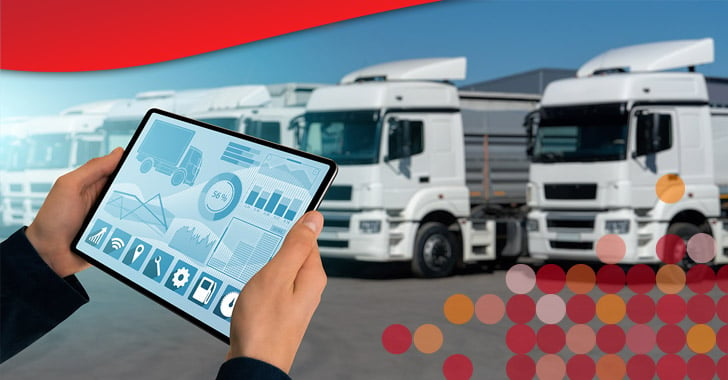For a fleet management platform to be effective, employee engagement and satisfaction are essential.
Forbes reports that “70% of business transformation efforts fail due to lack of engagement.”
Fleet management platforms advertise laundry lists of benefits for fleet managers and intend to help drivers as well. Yet, from a driver’s point of view, these applications are often associated with stress and annoyance. When employees open their workforce application, they may see assigned tasks, training requirements, poor scores, or constant reminders. This feeling is similar to the anxiety you feel before opening your email after a long weekend. What sounds more appealing, logging into your workforce application or Instagram? It is clear why most would choose to browse social media rather than something associated with their work. However, there are a couple of features social media uses to reel us in day after day that workforce management platforms can learn from.
The secret to a successful fleet management platform - one in which employees are both engaged and satisfied - comes from three key features: the manner in which workflows are provided, the ability to collaborate, and the ability to share.
The goal is for employees to be excited about opening their workforce applications. There should be a positive connotation with opening up the app. In this article, I will walk you through 3 features that are necessary for a workforce platform to be both positive and engaging.
- The Guiding Workflow Platform
The successful deployment of a workforce management platform does not come from the bells and whistles it provides but the satisfaction of the employees it’s geared toward. The most important aspect of a workforce management platform, when it comes to driver buy-in, is how it relays tasks and memos.
A platform that only gives orders and sanctions is seen as a source of stress and annoyance. This kind of negative association reduces driver buy-in and diminishes the incentive to fully engage with the app and take advantage of its features. When employees are reluctant to open their app, the platform becomes ineffective and essentially useless.
To avoid this issue, the first thing to look for when choosing a workforce management platform is the way in which it interacts with employees.
The keyword here is guiding.
A platform that guides, provides step-by-step workflows to employees in a helpful, not commanding manner. This allows employees to self-manage. One study reports that, 78% of uber drivers are satisfied with their work at the rideshare company. This high satisfaction rate comes from the freedom to self-manage and be your own boss.
Efficient and automated guidance allows drivers to spend less time on non-value-added interactions with managers. By cutting out unnecessary interactions, time management and operational efficiency increases for both drivers and managers alike.
Implementing a guiding workforce platform will enable employees to have access to the resources they need to succeed on their own, boosting their self-efficacy. Self-efficacy reflects one’s confidence in their personal ability to succeed and achieve goals. It plays a major role in how tasks and challenges are approached.
Detailed automated task management that provides guiding workflow information ensures that company expectations are made clear to all drivers. This allows for transparent and fair scorecards. These individual reports are scored from a non-biased approach so that compliance and productivity are always assessed fairly. For example, Performance and Driving behavior guidance will be received and acted on with more compliance if it’s tailored to employees’ individual strengths and weaknesses instead of a blanket report that may not apply to people specifically.
- The Collaborative Workflow Platform
Collaborative work management tools provide a central forum for communication and exchange between employees. With an element of collaboration, your workforce platform will have the social aspect that makes social media, such as Instagram, so enticing to its users. Say for example, when an employee reaches a milestone or accomplishes something they receive a badge on their app. Teammates and managers can then “like” and comment on these badges, congratulating and supporting one another. A collaborative workforce platform provides simple, easy, and social ways to communicate and interact with teammates and managers.
Platform collaboration also increases visibility for employees. They are able to see who’s doing what, who’s excelling, and why. The enhanced visibility of teammates’ actions and accomplishments, increases employee satisfaction while simultaneously boosting their incentive to achieve similar recognition.
An open and transparent social platform creates a company community by providing feedback, ratings, and company-wide engagement. The ability to read team messages and “like” other teammates’ accomplishments makes employees feel like they’re part of a community. Workflow collaboration features are a simple, easy, and social way for employees to interact and communicate with teammates and managers.
Another popular component of collaborative workforce management platforms is gamification. Gamification applies typical game-playing elements (such as point scoring, competition, and rules of play) to the workflow platform. Gamification stimulates the psychology behind human engagement by instantly rewarding those who participate. By creating healthy competition with rewards and recognition, employees create their own incentive to stay engaged, improve, and out-do one another, driving positive performance.
In a case study with one of the world’s largest companies, Tourmo reported stellar results from providing a workforce management platform that incorporates collaboration. The implementation increased employee satisfaction by 20% and engagement by 25%. Increased satisfaction came from having added visibility, interaction, and support from teammates, managers and upper management. The increase in engagement was a result of employees’ ability to request overtime, time-off, review weekly shift information, and payroll.
A workforce management platform that allows drivers to collaborate and create a sense of community boosts both performance and company morale.
- The Sharing Workflow Platform
As a professional fleet driver (one example of a remote workforce), life on the road can be isolating. The lack of collaboration and communication with other drivers in their fleet makes for a relatively lonely job. Extended feelings of loneliness and isolation can have harmful effects not only on one’s mental well-being but physically as well. In a Forbes interview, Vivek H. Murthy former Surgeon General of the United States stated that “Loneliness impairs performance, creativity, and decision making.” among a multitude of other important functions. Giving your workforce the ability to share and connect with one another will not only boost employee satisfaction but create a work environment in which drivers can learn from each other.
Coworkers are one of the most commonly used learning resources, and a workflow management platform with sharing features allows your company to take full advantage of that resource. Sharing information such as relevant news, documents, images, messages, videos, and audio will empower employees to become experts in their field and create a sense of community in a career that typically feels isolated. Having access to all of this information in one place gives employees faster access to knowledge and experts, allowing them to deliver better results. Key features might include a customized news feed with relevant articles, or two-way communication among employees.
Tourmo’s case study showed a 30% increase in corporate visibility as a result of implementing a sharing feature into their workflow platform. By adding a social aspect to your workforce platform, employees feel more inclined to open their app and engage not only with their tasks but with each other.
It’s important to keep these three driver-centric features in mind when choosing a workforce platform for your fleet. These tools will enhance your current employee experience, increase retention rates, and ensure a strong workforce in the long run. A platform that allows collaboration makes your company more attractive to top up and coming talent. A report by PwC states, “Millennials relish the opportunity to engage, interact, and learn from senior management.” By choosing a fleet management platform that fosters collaboration, guiding workflow, and sharing features, your business will have significantly improved odds of successfully implementing new technology.
To discover more about a workflow management platform that provides all three of these driver-centric features visit https://www.tourmo.ai/product/driving-behavior.
Tourmo's open platform has the ability to work with multiple data sources including data already collected by existing hardware devices (i.e., OBD-II), and by leveraging cell phones or tablets. With Tourmo, there is no need to replace the solutions you have already deployed to achieve the full potential of your fleet.



.jpg)
.jpg)
